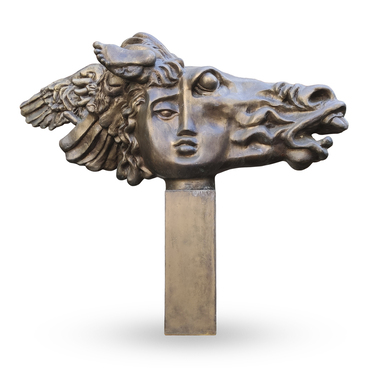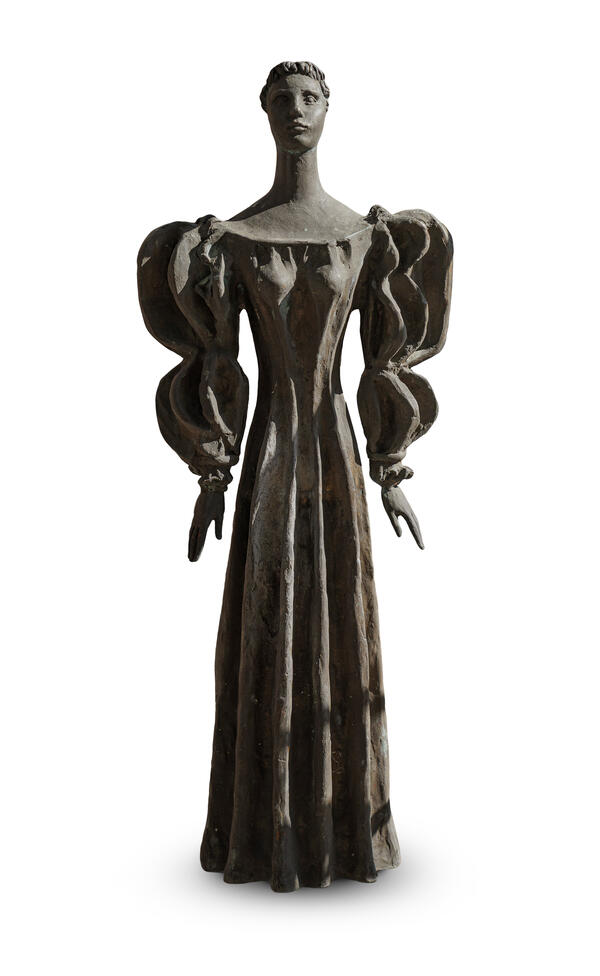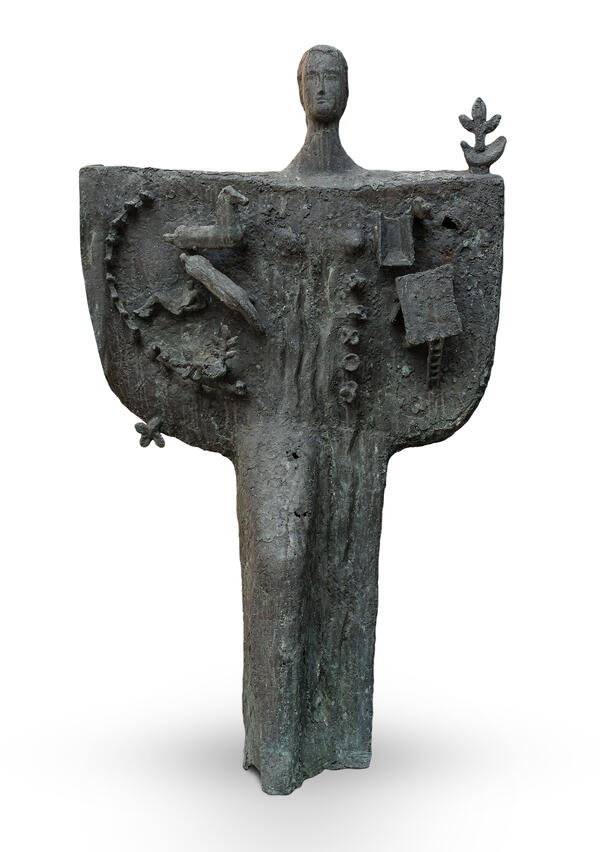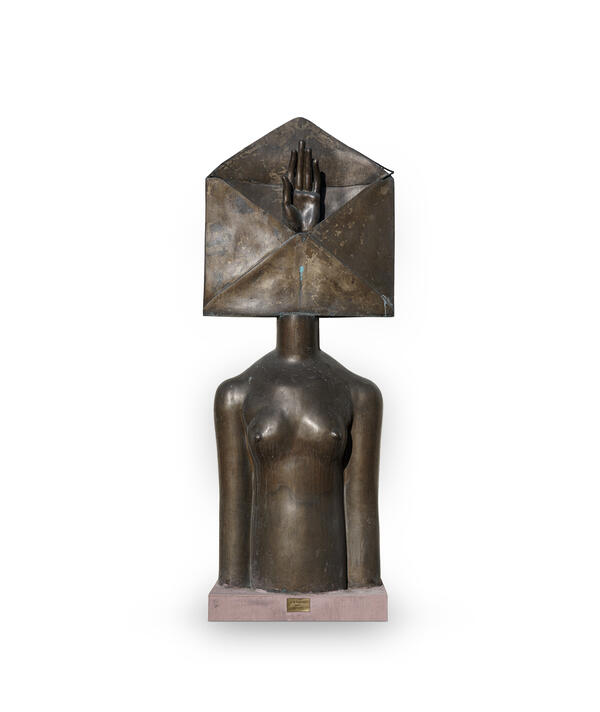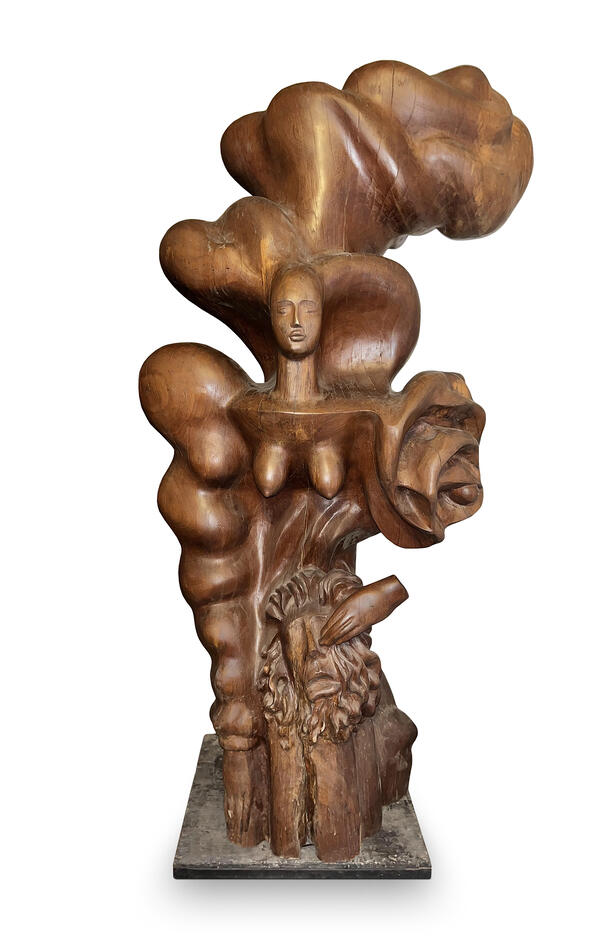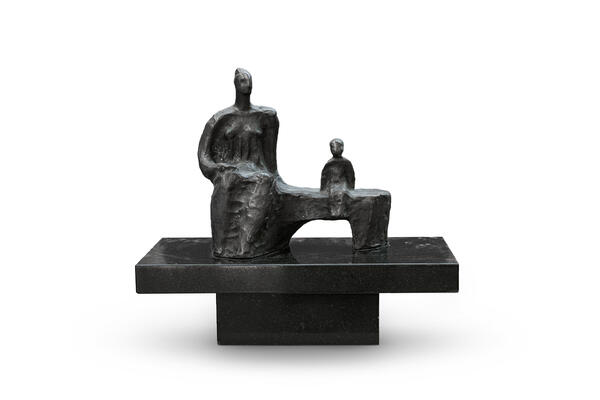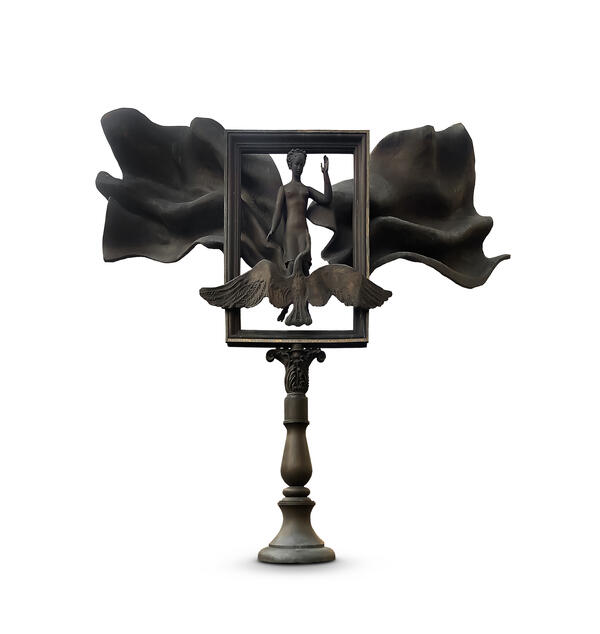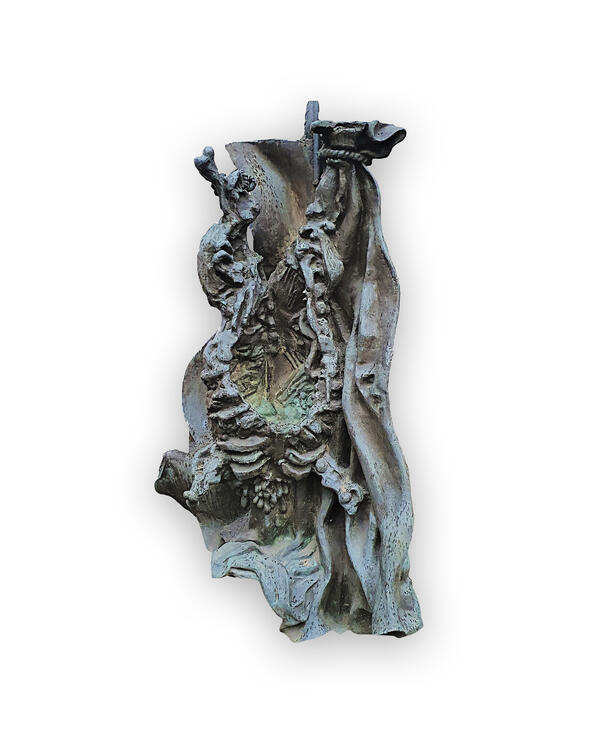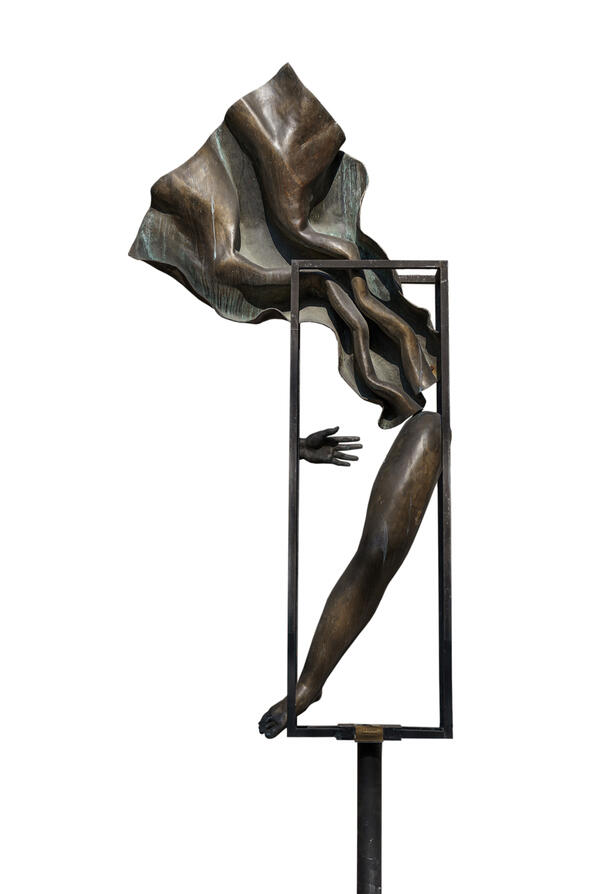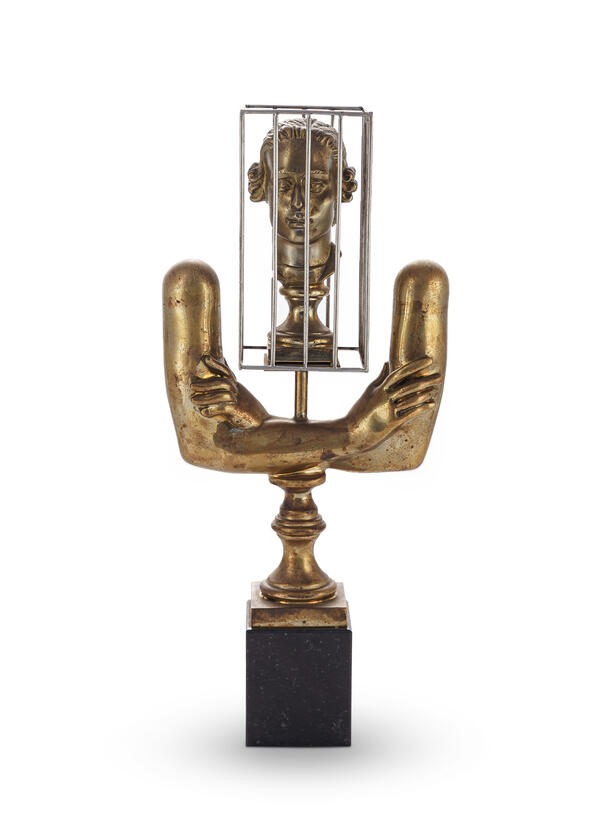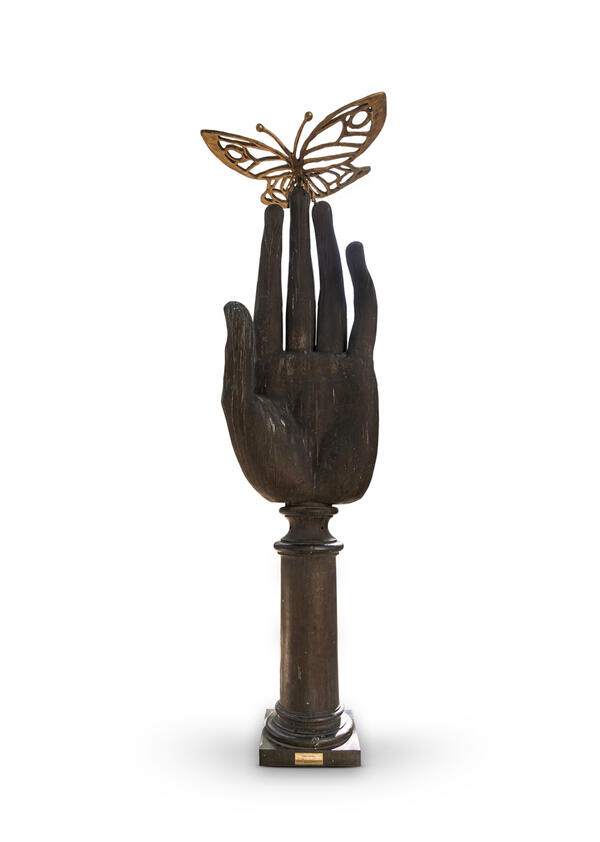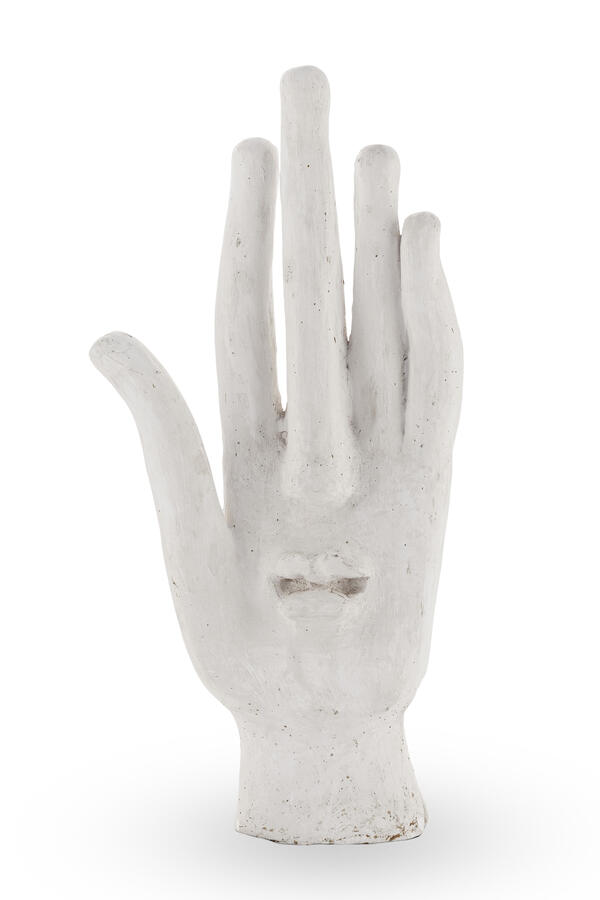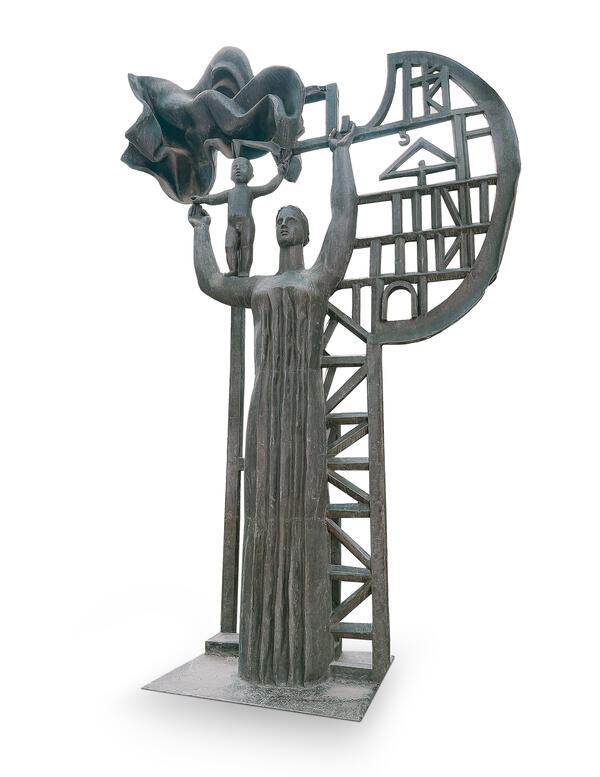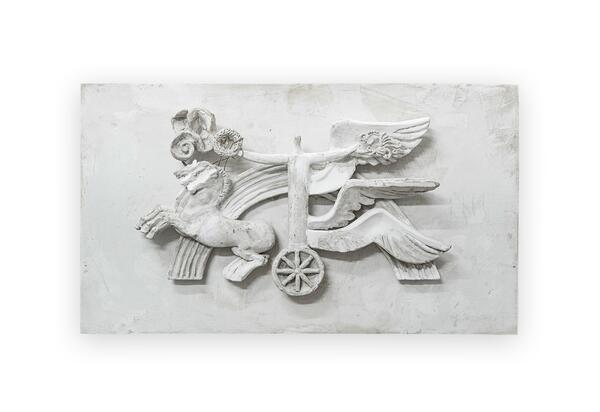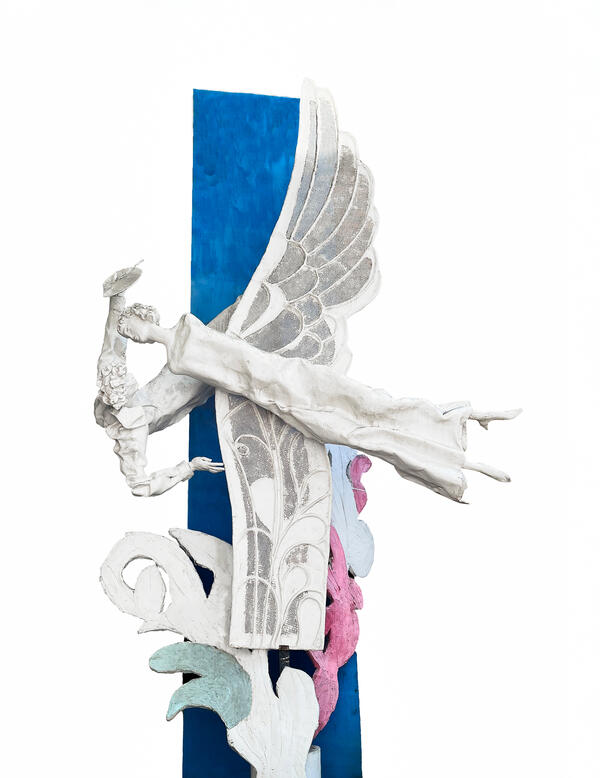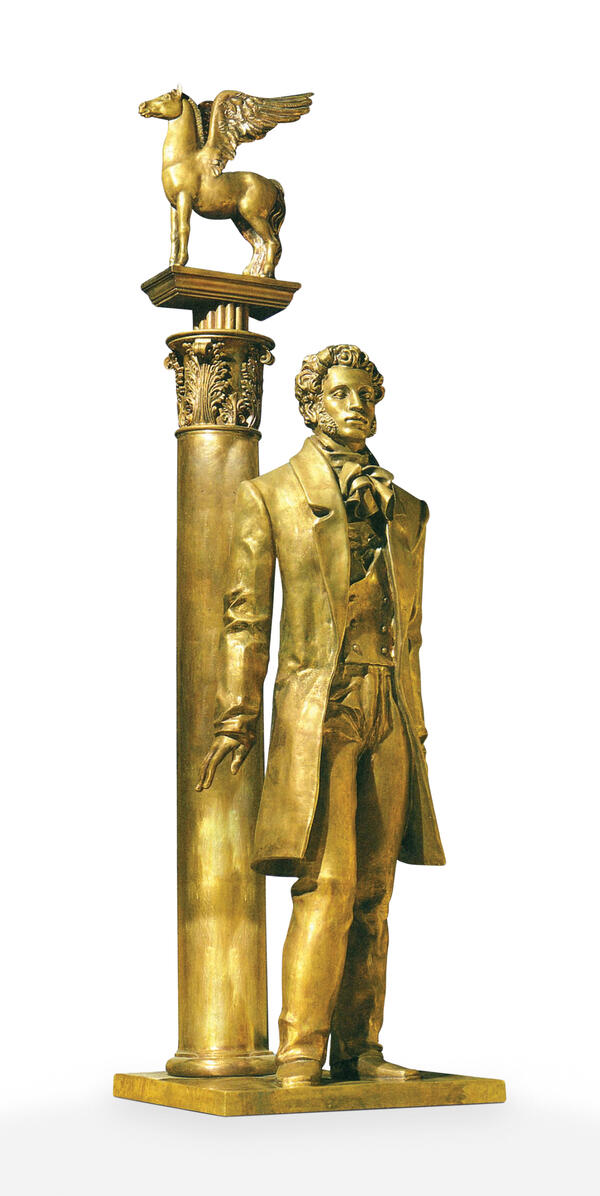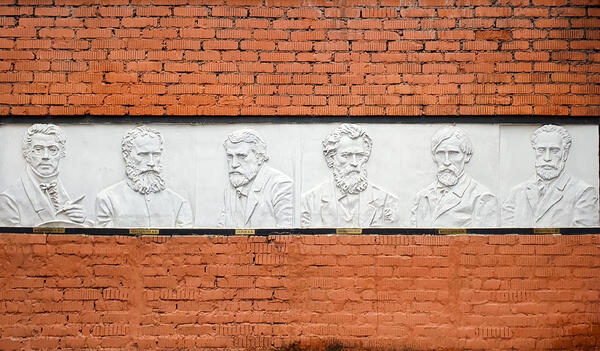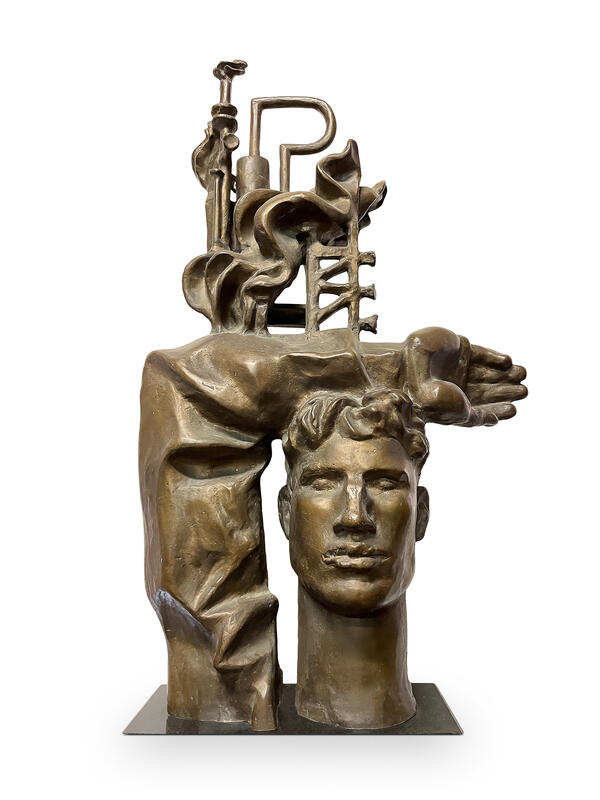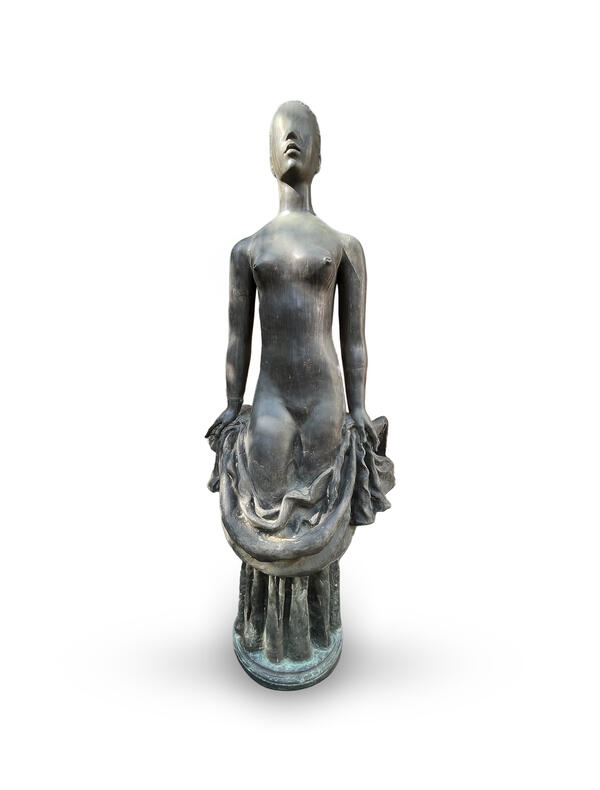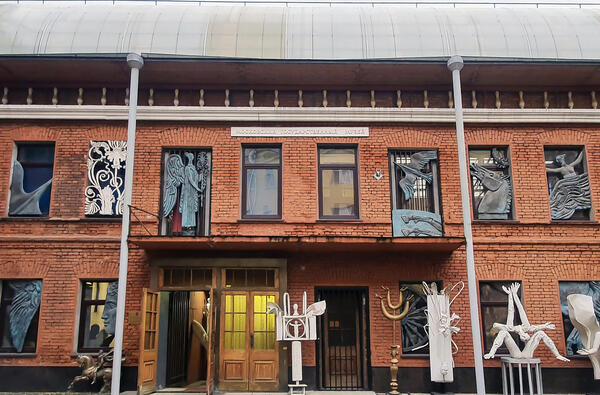Throughout his career, Alexander Burganov has repeatedly turned to the Bible. In 1990, he created the sculpture “Prophet” which is a philosophical and tragic image of an ancient prophet.
The composition is made up of seemingly disparate elements — a fish, a scroll, a human face, and legs. However, there is nothing random about Alexander Burganov’s work. Each detail embodies a significant meaning, and the viewer needs only to look carefully and think.
The sculpture’s second title “Fish” refers to an ancient Christian symbol. Before 313 CE, when Emperors Constantine I and Licinius declared religious tolerance in the Roman Empire, Christians were persecuted by the Romans, and images of Jesus were banned. During that period, the fish symbol appeared. The Jesus fish, or the ichthys (from the Greek “ΙΧΘΥΣ”), is a monogram for the name of Jesus.
The early Christians, hiding from persecution, used this symbol to identify each other. One person would draw a curved line, and if the other person was a Christian, they would know to draw the other curved line and complete the fish picture. Before the appearance of baptismal crosses, Christians wore small mother-of-pearl or stone fish. This symbol was kept secret and was not understood by those who were not initiated into the faith.
The knowledge and teachings of the early Christians have been preserved through writings on scrolls — long rolled-up sheets of paper or papyrus. Some ancient icons depict evangelists holding scrolls because books and codes appeared later.
The ancient prophets brought their knowledge and faith to people, overcoming dangers and hardships, and traveling great distances. The bare feet of the prophet in Alexander Burganov’s sculpture are also an ancient symbol. Depending on the context, a barefoot person may represent humility, a high status, or reverence. In ancient times, prisoners were often stripped of their shoes in order to prevent them from escaping. However, the depiction of barefoot prophets symbolizes their humility in the face of their inevitable fate as prisoners. In ancient times, there was also a custom in the Middle East to wash the feet of honored guests. Jesus chose to wash the feet of His disciples instead to demonstrate that He had come to this world to serve people.
Alexander Burganov combined all these symbols in his sculpture “Prophet”,
creating a comprehensive image of a person who carries their knowledge and
faith to people and serves a higher purpose, willing to sacrifice their own
freedom for the greater good.

